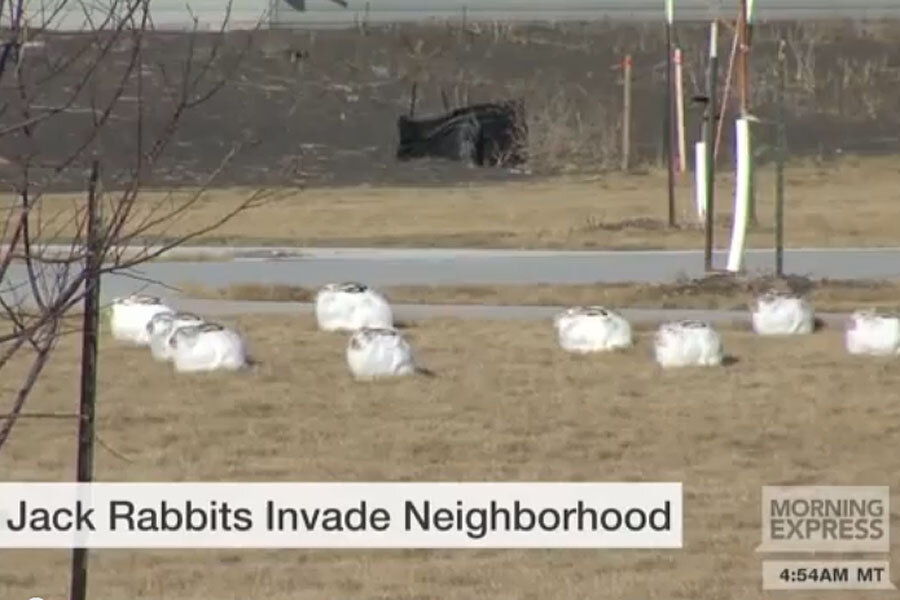How 'giant rabbits' took over an entire neighborhood in N.D.
Loading...
Hundreds of jackrabbits the size of small dogs have taken over parks and neighborhoods in Fargo N.D. and have become a serious nuisance for residences.
As the hares have multiplied during their 3 month stay in Fargo, they have destroyed shrubs and grass, and left their droppings everywhere. But residence are struggling to find a solution to the invasion of big white hares.
"Every day, I feel like the crazy rabbit lady chasing them out of the yard where they’re having a heyday," homeowner Kayla Straabe of Fargo N.D. told WTHR.
"Right away I thought they were really cute and now they're becoming a big nuisance and everyday I wake up and I open up the windows to see how many rabbits there are in my yard and there's at least 40-50 every day,” said Straabe.
The white-tailed jackrabbit is native to North Dakota and is, on average, two-feet long and seven pounds, according to the Northern Prairie Wildlife Research Center. The Center also reported that it is normal for the species to gather in large groups during the winter.
Straabe contacted the city pest control department, but was told that there are currently no measures in place to deal with "depopulating" jackrabbits in the county because they are technically wild animals. The department suggested that she poison them, but Straabe and other residents of the area are reluctant to pursue that course of action. Poisoning can be dangerous, particularly since the neighborhood affected is near a dog park.
“I can’t imagine someone would suggest poisoning the rabbits, but it’s true we don’t have anything in place to allow us to deal with the rabbits,” Fargo Police Lt. Vettel told ABC News. “What residents can do is start a formal process to get an ordinance, which is usually done at committee meetings.”
While residences and city officials work on an ordinance, the problem will only get worse. According to the Northern Prairie Wildlife Research Center, female jackrabbits can have three to four litters per year, each with up to nine babies, according to the Northern Prairie Wildlife Research Center.






